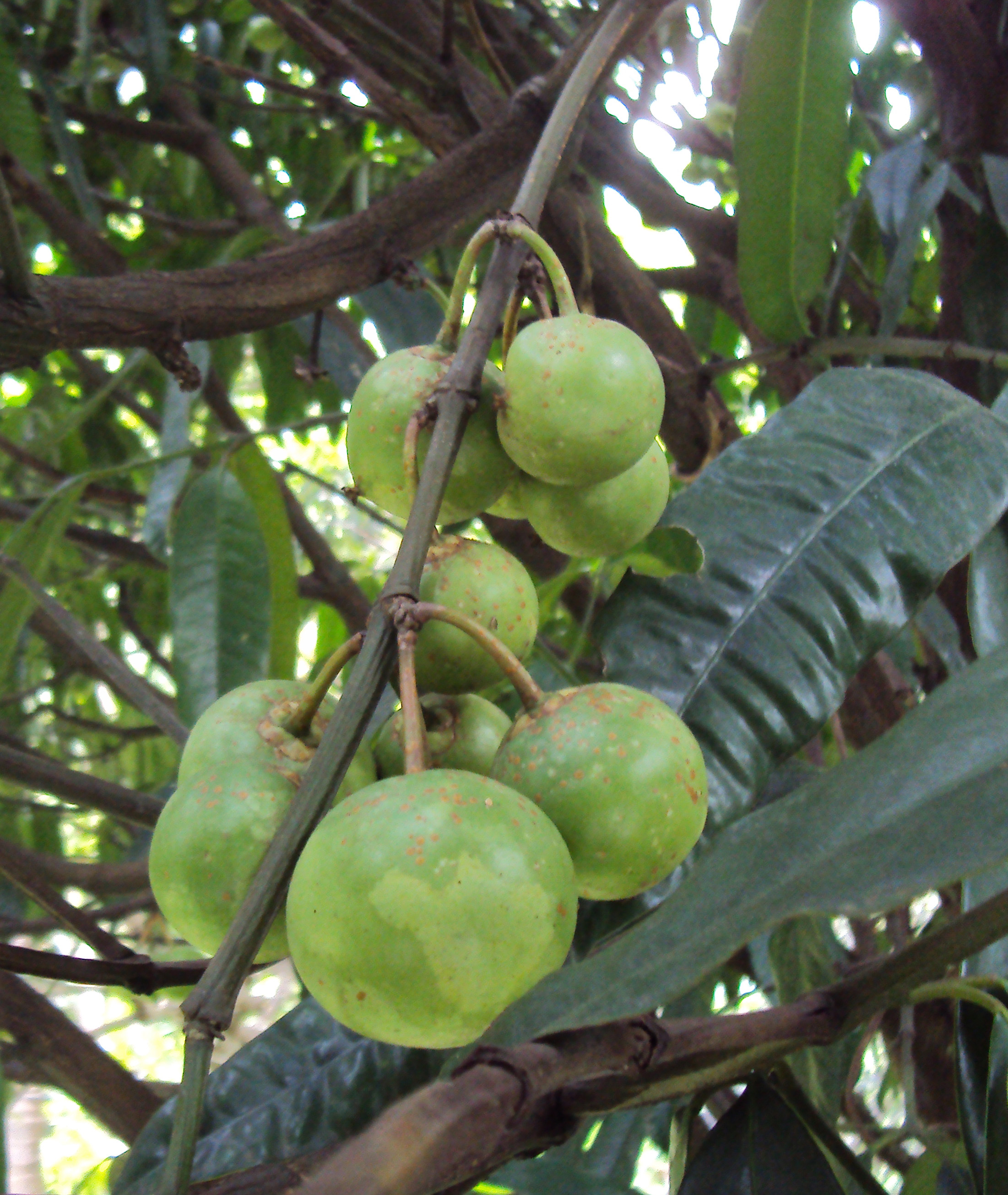|
Garcinia Paucinervis
''Garcinia paucinervis'' is a species of flowering plant in the family Clusiaceae. It is a tree found in China and Vietnam. It is threatened by habitat loss Habitat destruction (also termed habitat loss and habitat reduction) is the process by which a natural habitat becomes incapable of supporting its native species. The organisms that previously inhabited the site are displaced or dead, thereby .... References paucinervis Trees of China Flora of Guangxi Flora of Yunnan Trees of Vietnam Endangered plants Taxonomy articles created by Polbot {{Clusiaceae-stub ... [...More Info...] [...Related Items...] OR: [Wikipedia] [Google] [Baidu] |
Flowering Plant
Flowering plants are plants that bear flowers and fruits, and form the clade Angiospermae (), commonly called angiosperms. The term "angiosperm" is derived from the Greek words ('container, vessel') and ('seed'), and refers to those plants that produce their seeds enclosed within a fruit. They are by far the most diverse group of land plants with 64 orders, 416 families, approximately 13,000 known genera and 300,000 known species. Angiosperms were formerly called Magnoliophyta (). Like gymnosperms, angiosperms are seed-producing plants. They are distinguished from gymnosperms by characteristics including flowers, endosperm within their seeds, and the production of fruits that contain the seeds. The ancestors of flowering plants diverged from the common ancestor of all living gymnosperms before the end of the Carboniferous, over 300 million years ago. The closest fossil relatives of flowering plants are uncertain and contentious. The earliest angiosperm fossils ar ... [...More Info...] [...Related Items...] OR: [Wikipedia] [Google] [Baidu] |
Clusiaceae
The Clusiaceae or Guttiferae Juss. (1789) (''nom. alt. et cons.'' = alternative and valid name) are a family of plants including 13 genera and ca 750 species. Several former members of Clusiacae are now placed in Calophyllaceae and Hypericaceae. They are mostly trees and shrubs, with milky sap and fruits or capsules for seeds. The family is primarily tropical. More so than many plant families, it shows large variation in plant morphology (for example, three to 10, fused or unfused petals, and many other traits). According to the APG III, this family belongs to the order Malpighiales. One feature which is sometimes found in this family, and rarely in others (e.g., Malpighiaceae), is providing pollinators with rewards other than pollen or nectar; specifically, some species offer resin which bees use in nest construction (all three rewards are found in different species of the Clusiaceae). Taxonomic history The family Clusiaceae was divided by Cronquist into two subfamilies: ... [...More Info...] [...Related Items...] OR: [Wikipedia] [Google] [Baidu] |
China
China, officially the People's Republic of China (PRC), is a country in East Asia. It is the world's most populous country, with a population exceeding 1.4 billion, slightly ahead of India. China spans the equivalent of five time zones and borders fourteen countries by land, the most of any country in the world, tied with Russia. Covering an area of approximately , it is the world's third largest country by total land area. The country consists of 22 provinces, five autonomous regions, four municipalities, and two Special Administrative Regions (Hong Kong and Macau). The national capital is Beijing, and the most populous city and financial center is Shanghai. Modern Chinese trace their origins to a cradle of civilization in the fertile basin of the Yellow River in the North China Plain. The semi-legendary Xia dynasty in the 21st century BCE and the well-attested Shang and Zhou dynasties developed a bureaucratic political system to serve hereditary monarchies, or dyna ... [...More Info...] [...Related Items...] OR: [Wikipedia] [Google] [Baidu] |
Vietnam
Vietnam or Viet Nam ( vi, Việt Nam, ), officially the Socialist Republic of Vietnam,., group="n" is a country in Southeast Asia, at the eastern edge of mainland Southeast Asia, with an area of and population of 96 million, making it the world's sixteenth-most populous country. Vietnam borders China to the north, and Laos and Cambodia to the west. It shares maritime borders with Thailand through the Gulf of Thailand, and the Philippines, Indonesia, and Malaysia through the South China Sea. Its capital is Hanoi and its largest city is Ho Chi Minh City (commonly known as Saigon). Vietnam was inhabited by the Paleolithic age, with states established in the first millennium BC on the Red River Delta in modern-day northern Vietnam. The Han dynasty annexed Northern and Central Vietnam under Chinese rule from 111 BC, until the first dynasty emerged in 939. Successive monarchical dynasties absorbed Chinese influences through Confucianism and Buddhism, and expanded ... [...More Info...] [...Related Items...] OR: [Wikipedia] [Google] [Baidu] |
Habitat Loss
Habitat destruction (also termed habitat loss and habitat reduction) is the process by which a natural habitat becomes incapable of supporting its native species. The organisms that previously inhabited the site are displaced or dead, thereby reducing biodiversity and species abundance. Habitat destruction is the leading cause of biodiversity loss. Fragmentation and loss of habitat have become one of the most important topics of research in ecology as they are major threats to the survival of endangered species. Activities such as harvesting natural resources, industrial production and urbanization are human contributions to habitat destruction. Pressure from agriculture is the principal human cause. Some others include mining, logging, trawling, and urban sprawl. Habitat destruction is currently considered the primary cause of species extinction worldwide. Environmental factors can contribute to habitat destruction more indirectly. Geological processes, climate change, introdu ... [...More Info...] [...Related Items...] OR: [Wikipedia] [Google] [Baidu] |
Garcinia
''Garcinia'' is a genus of flowering plants in the family Clusiaceae native to Asia, America, Australia, tropical and southern Africa, and Polynesia. The number of species is disputed; Plants of the World Online (POWO) recognise up to 400. Commonly, the plants in this genus are called saptrees, mangosteens (which may also refer specifically to ''Garcinia mangostana''), garcinias, or monkey fruit. Many species are threatened by habitat destruction, and at least one species, '' G. cadelliana'', from South Andaman Island, is almost or even completely extinct already. The fruits are a food source for several animals, such as the archduke butterflies (''Lexias'' spp.) of tropical eastern Asia which relish the sap of overripe mangosteens. The genus is named after French botanist Laurent Garcin (1683–1751). Description ''Garcinia'' species are evergreen trees and shrubs, dioecious and in several cases apomictic. The fruit is a berry with fleshy endocarp, which in several species is ... [...More Info...] [...Related Items...] OR: [Wikipedia] [Google] [Baidu] |
Trees Of China
In botany, a tree is a perennial plant with an elongated stem, or trunk, usually supporting branches and leaves. In some usages, the definition of a tree may be narrower, including only woody plants with secondary growth, plants that are usable as lumber or plants above a specified height. In wider definitions, the taller palms, tree ferns, bananas, and bamboos are also trees. Trees are not a taxonomic group but include a variety of plant species that have independently evolved a trunk and branches as a way to tower above other plants to compete for sunlight. The majority of tree species are angiosperms or hardwoods; of the rest, many are gymnosperms or softwoods. Trees tend to be long-lived, some reaching several thousand years old. Trees have been in existence for 370 million years. It is estimated that there are some three trillion mature trees in the world. A tree typically has many secondary branches supported clear of the ground by the trunk. This trunk typically c ... [...More Info...] [...Related Items...] OR: [Wikipedia] [Google] [Baidu] |
Flora Of Guangxi
Flora is all the plant life present in a particular region or time, generally the naturally occurring (indigenous) native plants. Sometimes bacteria and fungi are also referred to as flora, as in the terms ''gut flora'' or '' skin flora''. Etymology The word "flora" comes from the Latin name of Flora, the goddess of plants, flowers, and fertility in Roman mythology. The technical term "flora" is then derived from a metonymy of this goddess at the end of the sixteenth century. It was first used in poetry to denote the natural vegetation of an area, but soon also assumed the meaning of a work cataloguing such vegetation. Moreover, "Flora" was used to refer to the flowers of an artificial garden in the seventeenth century. The distinction between vegetation (the general appearance of a community) and flora (the taxonomic composition of a community) was first made by Jules Thurmann (1849). Prior to this, the two terms were used indiscriminately.Thurmann, J. (1849). ''Essai de Phy ... [...More Info...] [...Related Items...] OR: [Wikipedia] [Google] [Baidu] |
Flora Of Yunnan
Flora is all the plant life present in a particular region or time, generally the naturally occurring (indigenous) native plants. Sometimes bacteria and fungi are also referred to as flora, as in the terms ''gut flora'' or ''skin flora''. Etymology The word "flora" comes from the Latin name of Flora, the goddess of plants, flowers, and fertility in Roman mythology. The technical term "flora" is then derived from a metonymy of this goddess at the end of the sixteenth century. It was first used in poetry to denote the natural vegetation of an area, but soon also assumed the meaning of a work cataloguing such vegetation. Moreover, "Flora" was used to refer to the flowers of an artificial garden in the seventeenth century. The distinction between vegetation (the general appearance of a community) and flora (the taxonomic composition of a community) was first made by Jules Thurmann (1849). Prior to this, the two terms were used indiscriminately.Thurmann, J. (1849). ''Essai de Phyt ... [...More Info...] [...Related Items...] OR: [Wikipedia] [Google] [Baidu] |
Trees Of Vietnam
In botany, a tree is a perennial plant with an elongated stem, or trunk, usually supporting branches and leaves. In some usages, the definition of a tree may be narrower, including only woody plants with secondary growth, plants that are usable as lumber or plants above a specified height. In wider definitions, the taller palms, tree ferns, bananas, and bamboos are also trees. Trees are not a taxonomic group but include a variety of plant species that have independently evolved a trunk and branches as a way to tower above other plants to compete for sunlight. The majority of tree species are angiosperms or hardwoods; of the rest, many are gymnosperms or softwoods. Trees tend to be long-lived, some reaching several thousand years old. Trees have been in existence for 370 million years. It is estimated that there are some three trillion mature trees in the world. A tree typically has many secondary branches supported clear of the ground by the trunk. This trunk typically co ... [...More Info...] [...Related Items...] OR: [Wikipedia] [Google] [Baidu] |
Endangered Plants
As of September 2016, the International Union for Conservation of Nature (IUCN) lists 3654 endangered plant species. 17% of all evaluated plant species are listed as endangered. The IUCN also lists 99 subspecies and 101 varieties as endangered. No subpopulations of plants have been evaluated by the IUCN. For a species to be considered endangered by the IUCN it must meet certain quantitative criteria which are designed to classify taxa facing "a very high risk of exintction". An even higher risk is faced by ''critically endangered'' species, which meet the quantitative criteria for endangered species. Critically endangered plants are listed separately. There are 6147 plant species which are endangered or critically endangered. Additionally 1674 plant species (7.6% of those evaluated) are listed as '' data deficient'', meaning there is insufficient information for a full assessment of conservation status. As these species typically have small distributions and/or populations, t ... [...More Info...] [...Related Items...] OR: [Wikipedia] [Google] [Baidu] |





